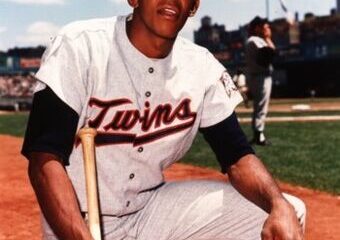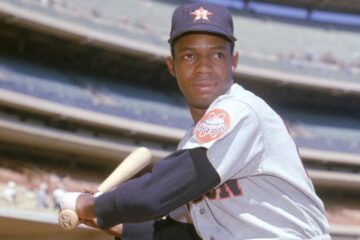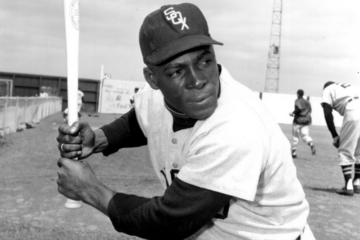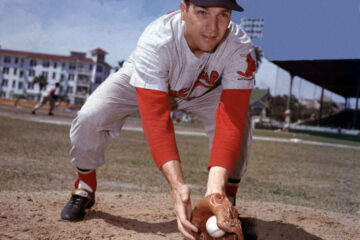The Hall of Fame Index: Who is the most qualified third baseman not in the Hall of Fame?
When we get to third base, we get to one of those positions where we find a player that can have his situation rectified fairly easily. Scott Rolen has been on the ballot for three seasons and had his percentage jump to 35.3 percent in year three. If it jumps again he should be on his way to enshrinement. If it stagnates then he could be on the outside looking in. From there, the Veterans Committee will decide on the other three.
All three played in a similar era, so they will all be considered together. It is not out of the realm of possibility that all three could find their way on the Veterans Committee ballot, but the likelihood is that they will have to go one at a time. So, our task today is two-fold. First, we need to make a determination on Rolen. Secondly, we need to see who amongst the other three should be first in line.
Of course, I would be remiss not to remind everyone that most of these questions were settled in more detail in my book The Hall of Fame Index Part II. Paperback versions are going for 14.99 while Kindle versions are going for 5.99. Enough of the advertising. Let’s get to the index on these four guys.
Career Value
| BWAR | FWAR | WS/5 | Total | |
| Scott Rolen | 70.1 | 69.9 | 60.8 | 200.8 |
| Graig Nettles | 68.0 | 65.7 | 64.2 | 197.9 |
| Buddy Bell | 66.3 | 61.7 | 60.2 | 188.2 |
| Ken Boyer | 62.9 | 54.8 | 55.8 | 173.5 |
Rolen does not have many of the statistical markers we look for in a lead pipe cinch Hall of Famer. He had only 2077 hits, 316 home runs, and just over 1200 runs and RBI. He did win a Rookie of the Year award and was a seven-time all-star. Add in eight Gold Gloves and you have some basis that the casual fan can use, but most of the faith you need is based on the numbers math geeks use.
As for the other three, we’d have to give the early lead to Nettles. Nine wins is not an insignificant sum, but it isn’t insurmountable either. This is why we include peak value and all of the other tests to determine who should be in. All three have career value numbers that look good enough to be in the Hall of Fame. So, it comes down to who is the most qualified.
Peak Value
| BWAR | FWAR | WS/5 | Total | Index | |
| Rolen | 53.7 | 54.4 | 46.4 | 154.5 | 355.3 |
| Nettles | 54.6 | 52.9 | 44.4 | 151.9 | 349.8 |
| Boyer | 56.8 | 49.8 | 46.2 | 152.8 | 326.3 |
| Bell | 50.8 | 45.6 | 38.6 | 135.0 | 323.2 |
I won’t go over the details here because they are in the book but suffice it to say that all four players are more than qualified for Cooperstown. That becomes the problem when we ask whether any particular player should be in the Hall of Fame. In any individual situation the answer will be yes. We could probably say yes to more than these four. Then, we have a backlog.
The better question is who is the most qualified. Rolen should be voted in immediately and shouldn’t have waited more than a year. Yet, it is fair to look at the pedestrian counting numbers and wonder where all of the value is coming from. This is where the hitting numbers, fielding numbers, and postseason numbers come into play.
It would appear as if Nettles has distanced himself from the other three. Again, these additional tests will tell us why. They also will tell us if we need to rethink what the index is trying to tell us. The index is just a guide after all. We need to consider as much data as possible before making a final decision.
Offensive Numbers
| OPS+ | Rbaser | OW% | wOBA | |
| Rolen | 122 | 12 | .626 | .368 |
| Boyer | 116 | 13 | .615 | .355 |
| Nettles | 110 | -3 | .551 | .337 |
| Bell | 109 | -17 | .533 | .335 |
Perhaps Rolen had the misfortune of playing third base at the same time as several other prominent players. Two of them are already in Cooperstown and one of them will be going there as soon as he is eligible. He was not as good a hitter as Chipper Jones or Edgar Martinez. There can be little doubt in that. He was not as good a fielder as Adrian Beltre, but as we will see shortly that separation isn’t as much as we might think.
Rolen was a good offensive player. No one would call him a great offensive player, but he somehow managed to beat all three of these gentlemen. Boyer did his damage in the 1950s and 60s when offensive numbers weren’t quite as prolific. The same could be said for Bell and Nettles in the 1970s and 80s. Yet, when compared with average Rolen was still better and that makes a difference when looking at overall value.
Fielding Numbers
| Rfield | DWAR | TZ3B | DWS/5 | |
| Rolen | 175 | 21.2 | 153 | 13.7 |
| Bell | 174 | 23.8 | 168 | 17.6 |
| Nettles | 140 | 21.4 | 136 | 18.4 |
| Boyer | 73 | 10.7 | 71 | 14.0 |
Comparing Rolen and Beltre is a false comparison. Depending on who you might ask, Beltre sits somewhere in the same territory as Wade Boggs and George Brett in terms of overall value. He will be a top five third baseman when all of the ink dries on his career record. You don’t have to be a top five third baseman to be a Hall of Famer. Rolen is a top ten guy and that is definitely good enough to get in.
The secret for him and all of these guys is that they were very good defensively on top of being good offensively. When you are a two-way player you accumulate value very quickly and efficiently. Beltre was superior defensively and obviously Brooks Robinson was as well. The only difference between Rolen, Bell, and Nettles was the fact that the last two did it longer. On a per season basis, Rolen was just a little better as he was offensively.
Postseason Numbers
| PA | SLASH | HR | Runs | RBI | |
| Nettles | 207 | .225/.295/.346 | 5 | 17 | 27 |
| Rolen | 159 | .220/.302/.376 | 5 | 18 | 12 |
| Boyer | 30 | .222/.241/.481 | 2 | 5 | 6 |
| Bell | — | —/—/— | — | — | — |
Aubrey Huff has made a name for himself on social media and called attention to his career by acting like a jackass. He is fond of referring to the two rings he won as a San Francisco Giant. He had ten total plate appearances during that second title where he went 1 for 10. Yet, he is selling himself as a winning player. I don’t mean to pile on Huff even though it is a bit fun. The point is that the reputations players get in this regard is often dependent on how the team does.
The Yankees won multiple titles with Nettles and then Cardinals won multiple pennants with Rolen. Boyer was not quite as prolific in the playoffs and Bell never got the opportunity. Does this mean Bell wasn’t a winning player? I suppose one could come to that conclusion, but it is also fair to point out that he played on lousy teams.
It is fair to ask how integral each player was in the success of those teams during the postseason. This is where we mention Huff again. He was brilliant in the regular season, but not so much in the postseason. Obviously, considering postseason success is a bit fluid. None of these guys have great postseason numbers, so we will leave it aside for now.
BWAR MVP Points
| Top 10 | Top 5 | MVP | Points | |
| Nettles | 4 | 0 | 2 | 32 |
| Boyer | 3 | 4 | 0 | 29 |
| Bell | 3 | 2 | 0 | 19 |
| Rolen | 3 | 1 | 0 | 14 |
You don’t see too many guys that deserve two MVPs and you definitely don’t see many that had that happen and got shut out on the real ones. Nettles was a devastatingly good two-way player in his prime and probably held on too long once his skills had eroded. Adding to those counting numbers helps, but it also puts more space between you and the player you want them to remember.
Add all of these categories together and it is pretty clear that Rolen should be in the Hall of Fame and Nettles should be first in line when it comes to the Veterans Committee. Nettles had four seasons with 20 or more fielding runs (Rfield) but somehow had only two Gold Gloves. His best finish in the MVP voting was a meager fifth place finish in 1977. He attended only six all-star games. Clearly, the people of the time had missed the boat. He shouldn’t be a surprise that he fell off the Hall of Fame ballot following a drop to 4.7 percent in 1997.
Boyer and Bell fare okay with the MVP points, but there is obvious separation. Finishing in the top ten seven times is obviously quite a feat and should get Boyer a second look by the committee. Bell will ultimately probably end up in the same category as guys like Darrell Evans. They have the numbers to get in, but they’ll have to wait a long time for the backlog to clear.





